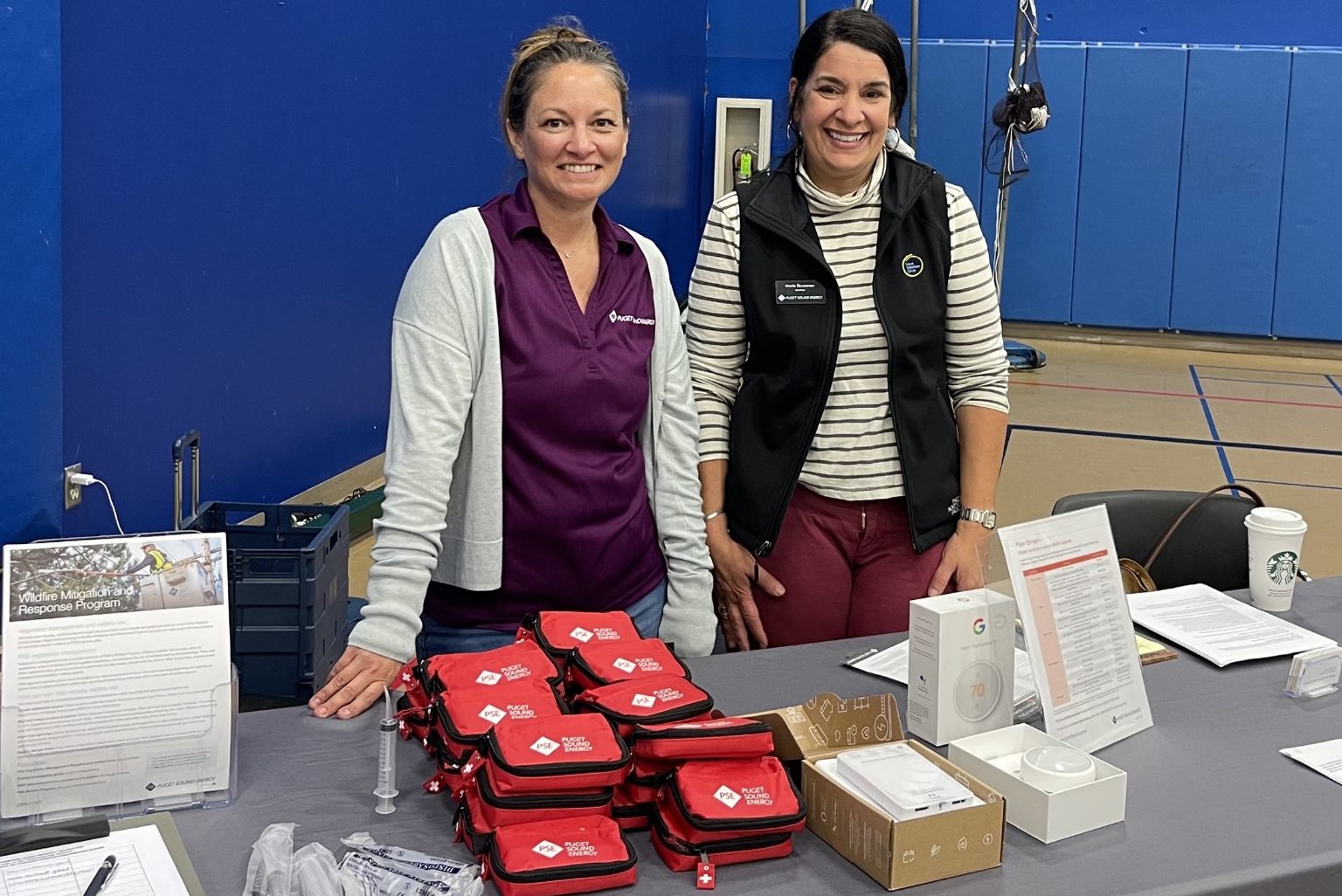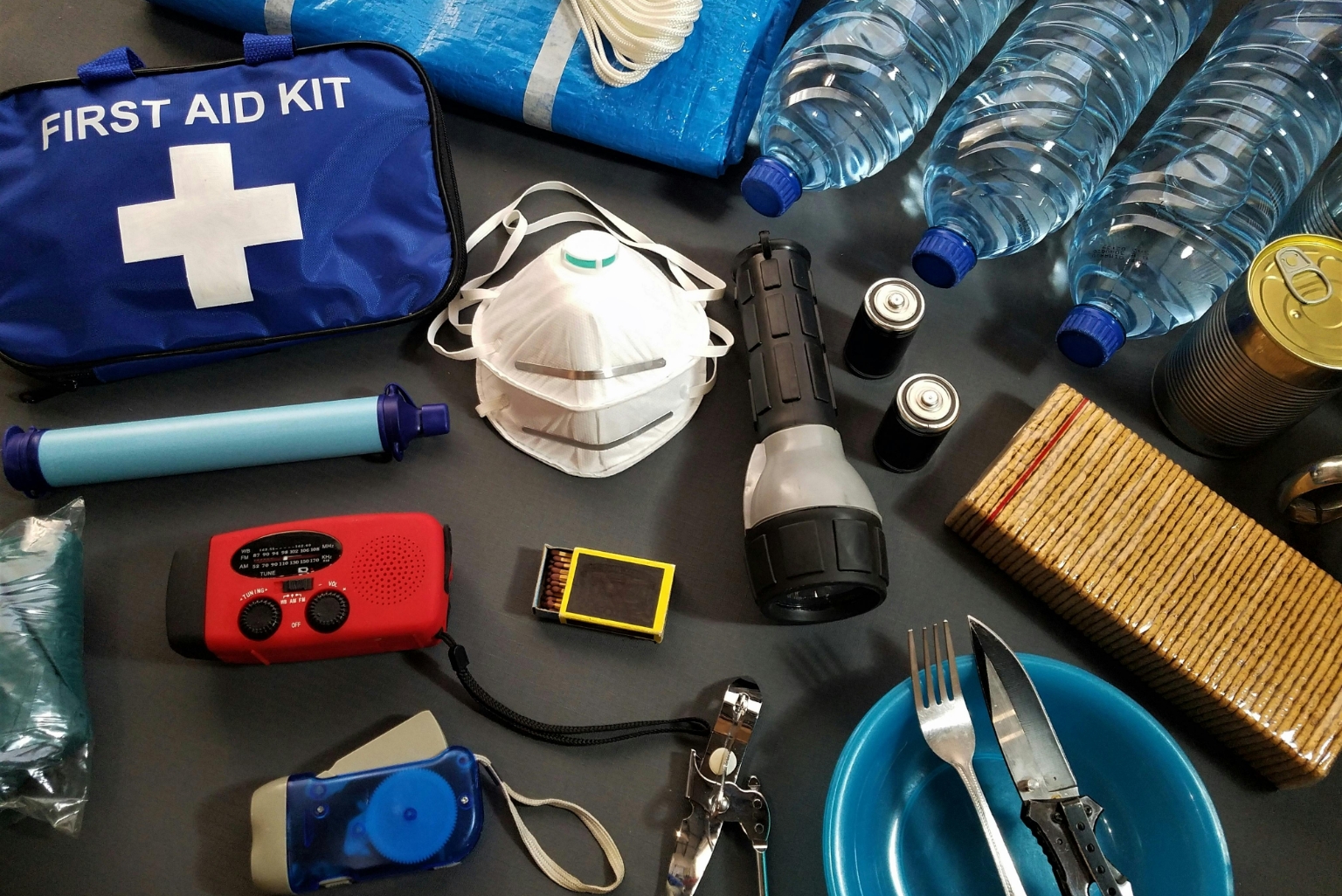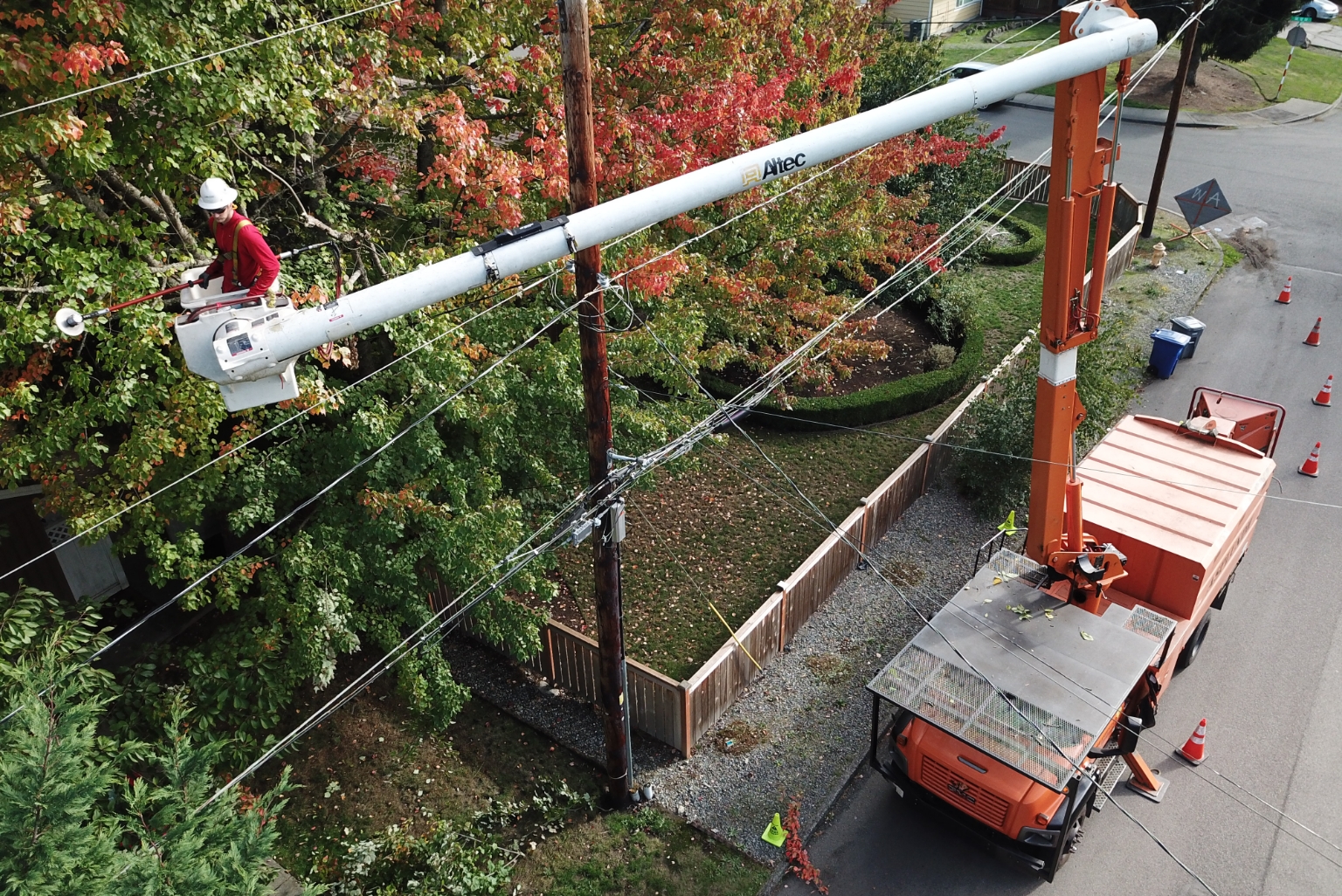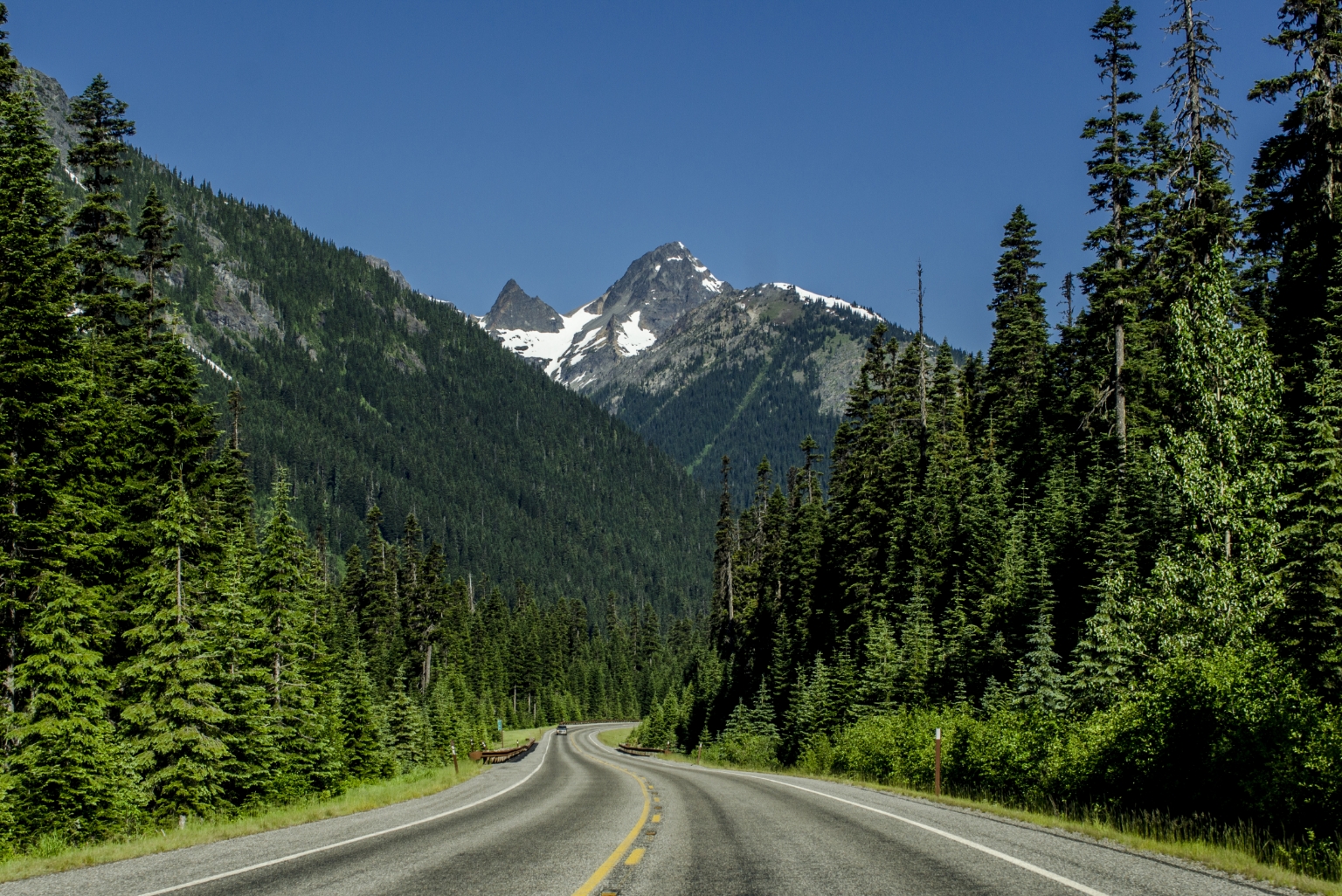STATION 3
Prepare for wildfire season
How to prepare for PSPS
In advance of PSPS
- Make sure your PSE account contact information is up to date.
- Stay informed about potential shutoffs on our Alerts and advisories page.
- Prepare for any medical needs.
- Create and practice a family emergency plan and build an emergency kit.
- Sign up for emergency notifications from your county Emergency Management agency and the National Weather Service.
- Learn how to manually open your garage door or any other electronically controlled doors or gates.
- Know which natural gas appliances will continue to operate if there is a power outage.
When PSPS is likely
- Ensure mobile phones and other devices are fully charged. Consider portable device chargers.
- Stock up on water, shelf-stable food, ice for coolers, medications, and other things you’ll need for at least three days.
- Maintain a full tank of gas and keep cash on hand.
- Ensure any backup power sources are ready to operate.
- If you own a standby or portable generator, be sure you know how to operate it safely.
- Unplug or turn off appliances, lights, and electronics. Keep a single light on so you know when the power is restored.
- Fill containers and/or the bathtub with water to be used in case water service is impacted by the power outage.
During a PSPS
- Keep your freezer and refrigerator doors closed; open them only when it is necessary.
- Use flashlights instead of candles for safety.
- Close curtains, drapes, and blinds to keep sunlight from heating up your home. Open windows in the cooler mornings and evenings to cool the house naturally.
- Conserve water, especially in areas where well pumps and pumping stations may be without power.
- Never operate a portable grill indoors.
Vegetation management
PSE regularly inspects power lines throughout our service area and trims or removes hazardous trees and other vegetation that get too close to the lines. We need your help to maintain healthy trees and reduce fuel sources for wildfires.
Create defensible space
Clear brush or other flammable items from around your home. Learn more from the Washington Department of Natural Resources.
Maintain trees on your property
When trees are improperly trimmed, they can become a hazard.
Plant the right tree
Select fire-resistant plants and locate trees a safe distance from power lines and other equipment.
Report danger trees
If you notice a tree that is dangerously close to overhead power lines, fill out our contact form and we’ll send out a PSE-certified arborist to look at it at no cost to you.





